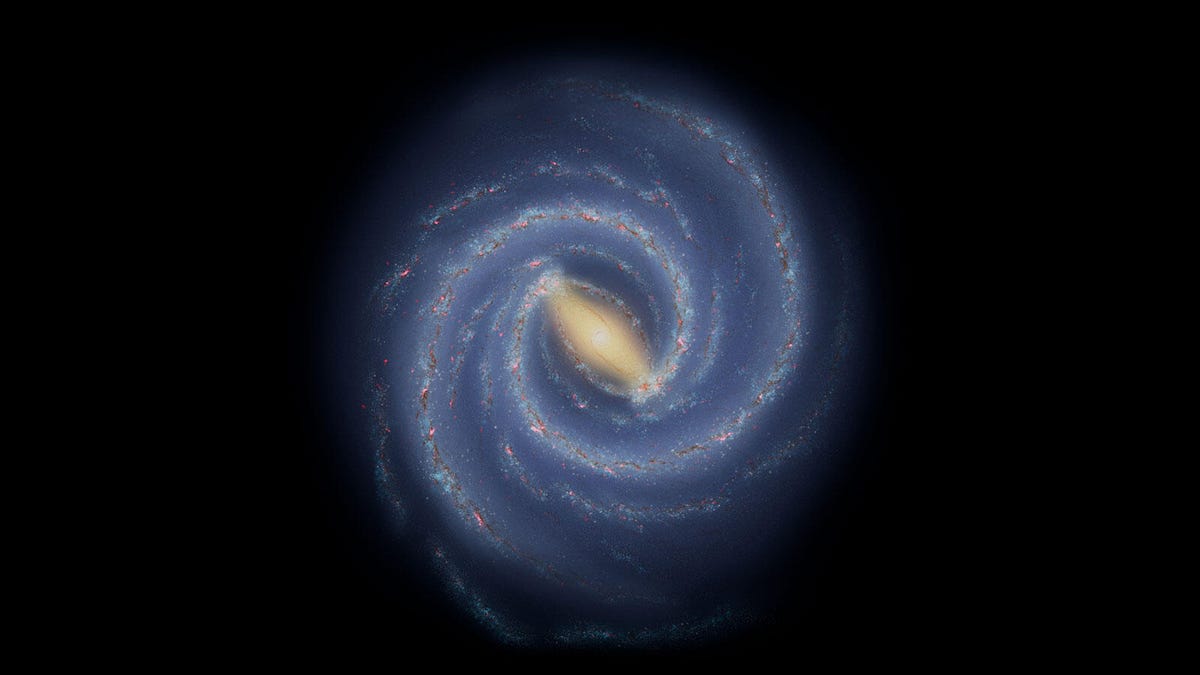The Milky Way has a broken arm
NASA says it's "like a splinter poking out from a plank of wood."
Astronomers have done impressive work figuring out what the Milky Way looks like. We know it's a spiral galaxy with two major arms. A new study reveals one of the galaxy's minor arms has a "break" in it, a set of stars and gas clouds that are sticking out.
NASA described the break last week as being like a splinter sticking out from wood. "Stretching some 3,000 light-years, this is the first major structure identified with an orientation so dramatically different than the arm's," the space agency said in a statement.
The structure that's sticking out includes young stars and a group of nebulae, including the Lagoon Nebula and the Eagle Nebula, home to Hubble's famous Pillars of Creation image. Instead of holding tight to the spiral of the galaxy's Sagittarius Arm, the structure protrudes at a notable angle.
Stars and star-forming gas clouds make up the "break" that's sticking out of the Milky Way's Sagittarius Arm. The star shapes represent star-forming regions.
Caltech astrophysicist Michael Kuhn is the lead author of the study, published last month in the journal Astronomy & Astrophysics.
The research team used data from NASA's now-retired Spitzer Space Telescope and the European Space Agency's Gaia space observatory to locate newborn stars and measure distances to them to create a 3D look at the arm segment.
"When we put the Gaia and Spitzer data together and finally see this detailed, three-dimensional map, we can see that there's quite a bit of complexity in this region that just hasn't been apparent before," said Kuhn. Scientists have spotted similar structures in spiral galaxies seen by our telescopes. These structures have been called spurs or feathers.
"The stars in the newly discovered structure likely formed around the same time, in the same general area, and were uniquely influenced by the forces acting within the galaxy, including gravity and shear due to the galaxy's rotation," said NASA.
The Milky Way is our home (Earth resides in the small Orion arm), and it will continue to be a challenge to work out the details of its structure. As NASA said, it's like standing in the middle of Times Square and trying to draw a map of the entire island of Manhattan.
The "splinter" find gives scientists a fresh perspective on the galaxy. It may have distinctive spiral arms, but not every star and nebula is coloring within the lines.
Follow CNET's 2021 Space Calendar to stay up to date with all the latest space news this year. You can even add it to your own Google Calendar.


